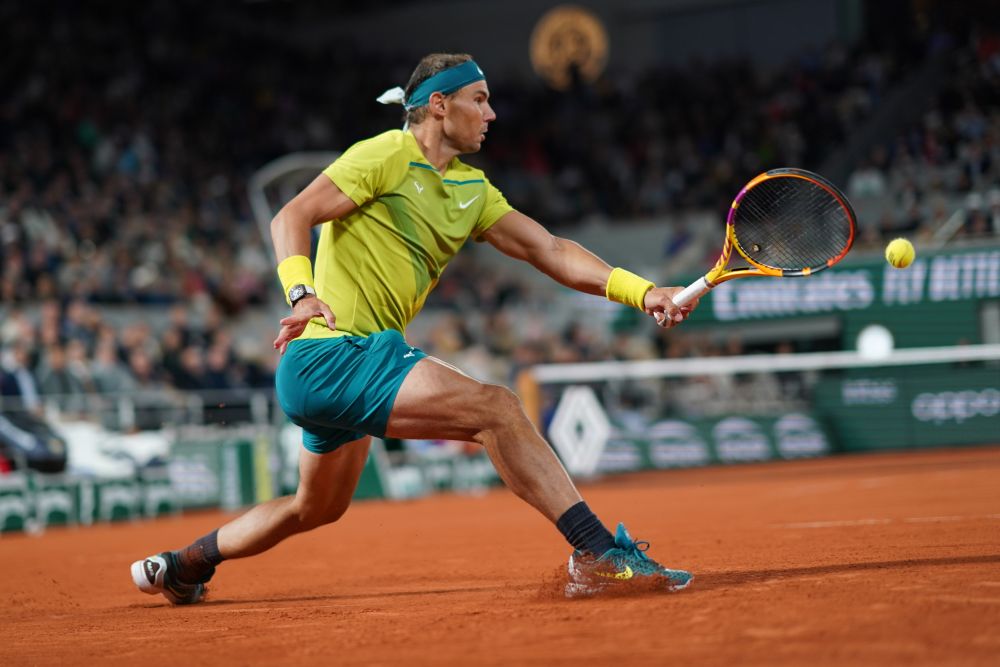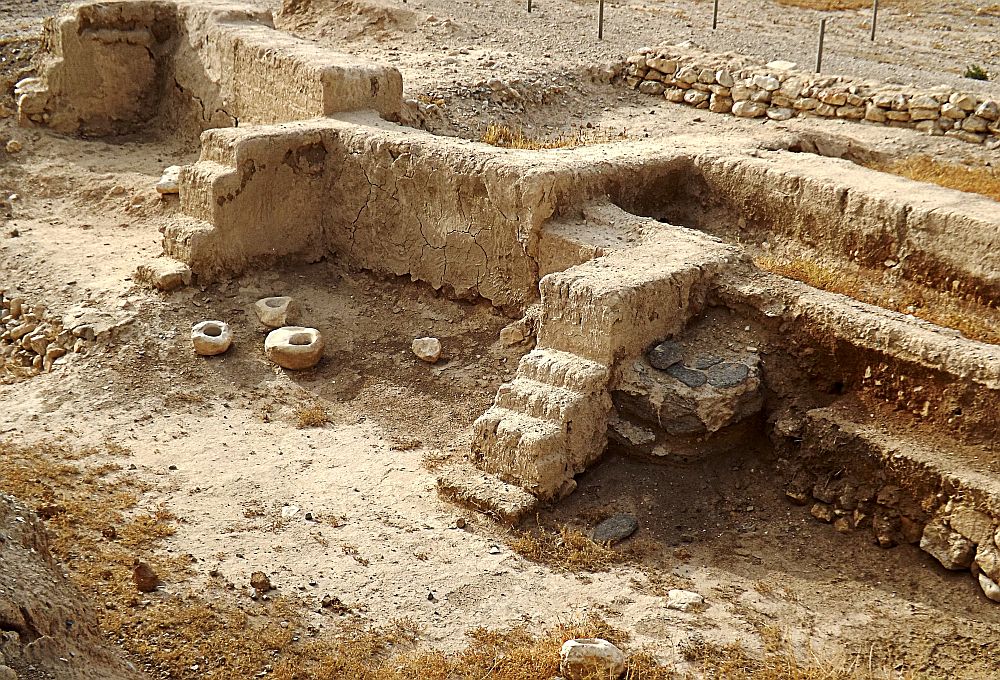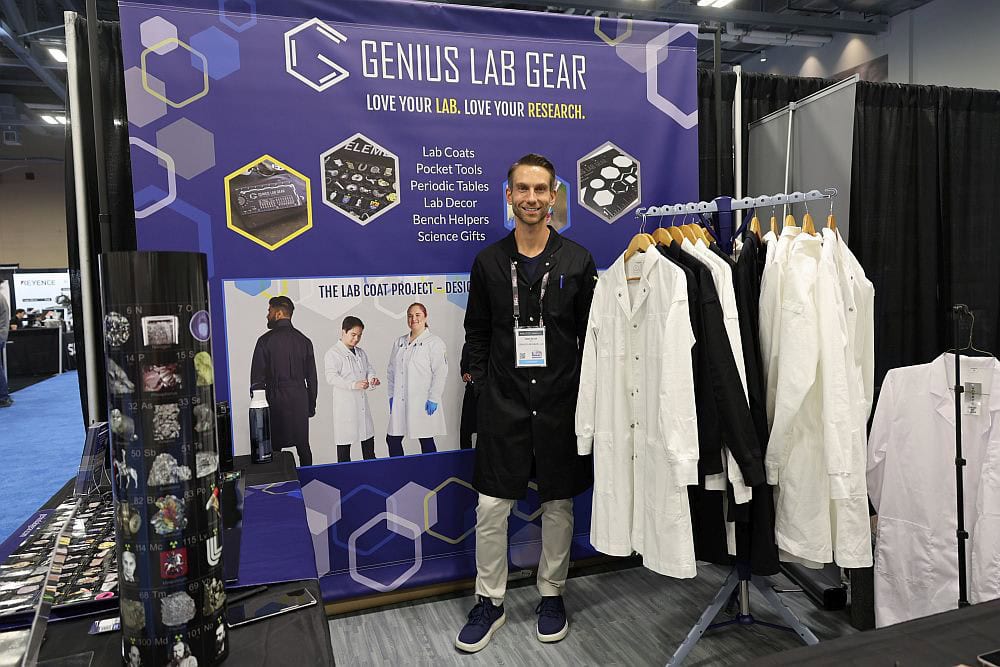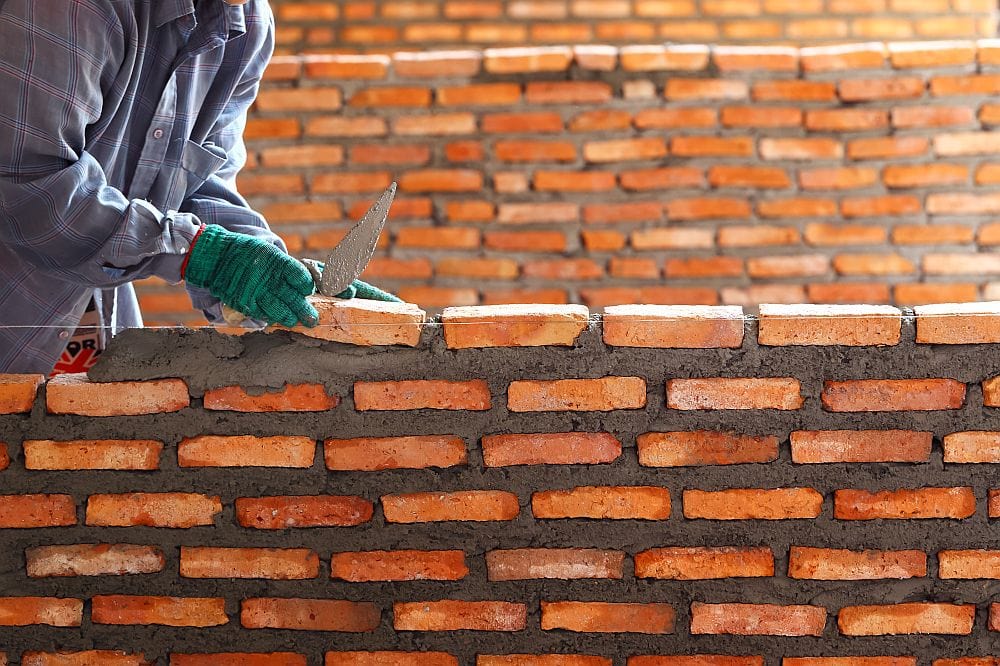
[Image above] Spain’s tennis legend Rafael Nadal has won more French Open titles than anyone in history. His expertise playing on the clay court is demonstrated in this picture from the 2022 Roland-Garros. Credit: Leonard Zhukovsky, Shutterstock.com
Starting yesterday, the qualifying rounds for the 2025 French Open tennis classic (also known as Roland-Garros) began. It is the second of the four annual Grand Slam tournaments, each lasting for two weeks.
Each of the Grand Slam tournaments takes place on a different type of court surface. The Australian Open uses synthetic courts (polypropylene or synthetic turf), the US Open uses hard surfaces (cement or asphalt), Wimbledon uses grass, and the French Open uses clay. One must be quite the versatile player to be successful on all four surfaces.
In the sports world, it is well known that U.S. tennis players tend to struggle at the French Open due to its use of the clay court, which is an uncommon surface type in North America. In today’s CTT, we’ll look at the history and unique properties of clay courts and highlight some benefits of learning to play effectively on this surface.
Clay court history and types
Clay courts came on the scene at the end of the 19th century as a result of British tennis star William Renshaw’s efforts to protect his grass tennis courts in Cannes, France, from the heat. He did so by covering the courts with red clay powder, obtained from terracotta pots manufactured in the nearby town of Vallauris.
Today, each French Open court surface consists of 1–2 mm of red brick dust on top of several other layers of material:
- Crushed white limestone: 6–7 cm
- Clinker (coal residue): 7–8 cm
- Crushed gravel: at least 30 cm
Each of the 20 courts requires 1.1 tons of crushed bricks, which are crushed into powder at a local manufacturer. During breaks in play, the clay surface must be swept and raked in under two minutes.
Not all clay courts are made of red brick. Other clay court colors and materials include
- Green. Made of crushed metabasalt, a natural green stone, which is sourced from the Blue Ridge Mountains of Virginia. This surface is more slippery but offers quicker changes in direction than red clay. According to green clay manufacturer Har-Tru, after the stone is crushed, screened, and mixed in the proper proportions, it is installed over a porous base of crushed stone aggregate.
- Hybrid. A combination of hard court materials and clay, hybrid courts are becoming more popular in the U.S. because they require less maintenance than standard clay ones and can be easier to install. Currently, no professional tournaments have been played on them.
- Yellow. The surface is made from crushed brick of a bright yellow color. Some professional tournaments are played on this clay, such as the ATP Seville Cup or Copa Sevilla in Spain.
Clay courts around the world
Besides the French Open, several other European professional tournaments are played on this surface. Although made from a similar material, the differences in climate can still change the surface’s characteristics. For example, according to U.S. tennis star Madison Keys, the clay in Spain is powdery and almost slippery, compared to Rome’s coarser, sandier, denser, and stickier clay.
In the United States, the U.S. Men’s Clay Court Championship, founded in 1910, is now played at River Oaks Country Club in Houston, Texas. It is currently the only clay court tournament sponsored by the Association of Tennis Professionals (ATP) held in North America. The Women’s Tennis Association (WTA) Charleston Open is also played on clay.
A North American clay court with a long history is the Frick Park Clay Courts in Pittsburgh, Pa., which first opened in 1930. The Frick courts use natural red clay from New Jersey (Beam Clay) and locally sourced red brick from Redland Brick (Harmar, Pa.)
The first year it opened, Frick Park Clay Courts hosted the Pittsburgh Parks Championships for Men and Women. More recent tournaments include the Frick Park USTA Junior Open Tournament and the Paul G. Sullivan Clay Championship.
How to play on clay
Clay courts can be a challenge for players more familiar with other surfaces. The ball bounces higher and slower, reducing the pace of the game. This slower pace requires players to be “more strategic, emphasizing endurance and precision over sheer power,” according to an article by Trueline Construction & Surfacing. Thus, more work is required to earn a point.
Renowned tennis player Jessica Pegula, who recently won the WTA Charleston Open, notes that the major challenge is mental. “…you’re not always going to get great bounces,” she says in a Hologic WTA Tour article, “…you have to figure out [the difference in conditions]…and just embrace it.”
Despite these challenges, there are health benefits to playing on clay courts. Studies have found that clay court players tend to have fewer knee and back injuries, mainly because clay courts produce less friction between the shoe and the surface. In other words, the slipperier the surface, the better for putting less stress on the joints.
For amateurs wanting to test their tennis skills on clay, here are five tips:
- Slide into your shots
- Embrace the slower pace
- Switch up your shots
- Consider all the angles
- Hit the ball deep
You can also watch this video featuring Iga Swiatek, who recently won her fourth French Open, making her the youngest WTA player in the Open Era to claim four titles on the red clay.
The King and Queen of Clay
Spain’s tennis legend Rafael Nadal has won the most French Open titles at 14, more than anyone in history. His success is attributed to a monster forehand, plenty of drop shots and angles, and finishing points at the net.
Nadal first won this event in 2005, four years after he turned professional. He has also won numerous titles at other major clay court events such as the Monte-Carlo Masters (11 wins), the Barcelona Open (12 wins), and the Italian Open (10 wins). Nadal has a win percentage of 91.2% on clay courts, which has led many publications to rank him the top clay court player of all time.
During the Open Era (which began in 1968 when Grand Slam tournaments allowed professional players to compete alongside amateurs), U.S. tennis great Chris Evert won the most singles titles at Roland-Garros—winning seven times in 13 appearances. Her first win was in 1974, with her last win in 1988.
Evert also won 24 clay court tournaments from 1971 to 1979, with a 125-match winning streak. Her success on clay is attributed to her strategic shot placement and exceptional footwork, among other skills.
The future of clay courts
Synthetic courts are gaining in popularity because their characteristics are similar to natural surfaces but with enhanced durability and consistency. If traditional clay courts disappear, perhaps the playing field will be evened out, but it will be to the detriment of the overall game and a competitor’s versatility.
Author
Laurel Sheppard
CTT Categories
- Education


